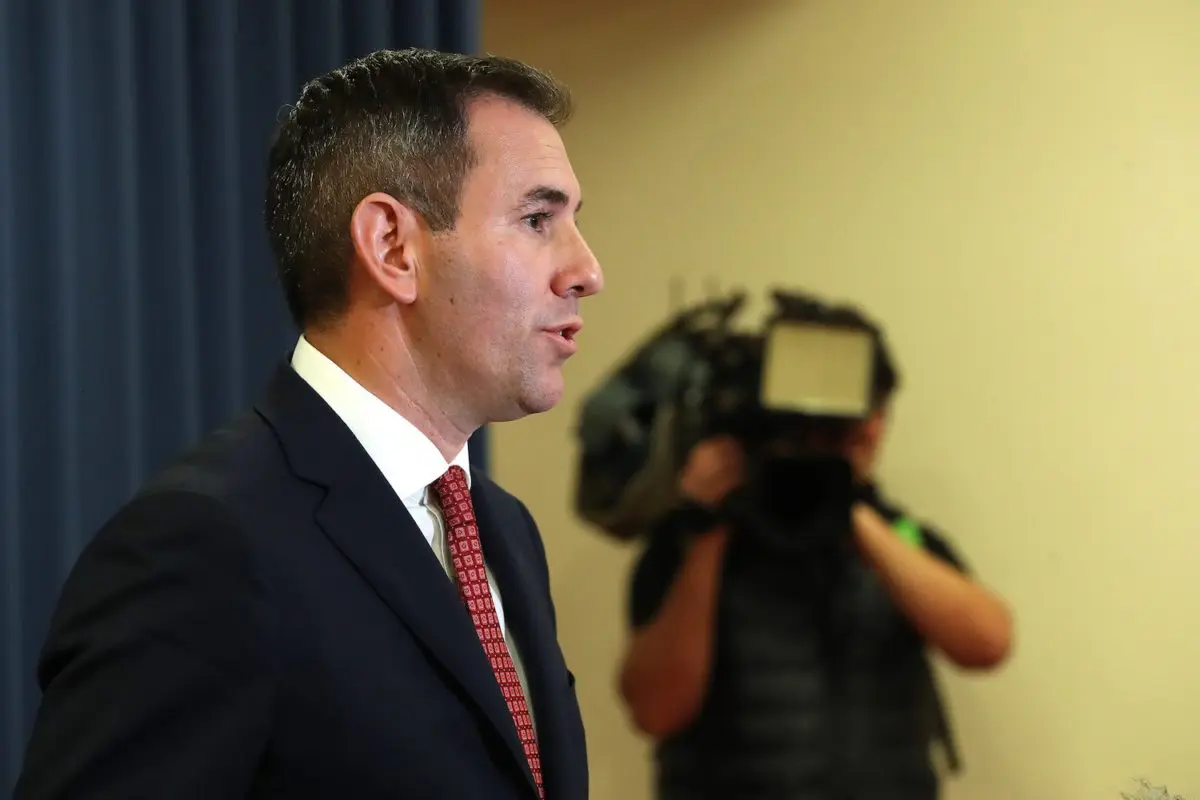Critical minerals, battery manufacturing, renewable hydrogen, and green metals have been flagged as net zero industry priorities by the federal treasurer.
Australia needs to lean into its natural advantages in the design of net zero industry policy, the federal treasurer says, rather than produce a carbon copy of the United States’ multi-billion-dollar clean energy incentive program.
Treasurer Jim Chalmers says Australia will focus on net zero industries where the nation could be genuinely competitive and can build on its comparative advantages.
“We won’t realise Australia’s unique geographical, geological, geopolitical, intellectual and meteorological advantages by designing an Inflation Reduction Act lite – looking only for big numbers but missing the bigger picture,” Dr Chalmers said on Thursday.
The Inflation Reduction Act refers to the Biden administration’s $520 billion package that includes generous tax incentives for clean energy and other key technologies.
“We will complement, not copy, the priorities and plans of other nations, not just do exactly the same kind of investment with the exact same subsidies,” Dr Chalmers told a conference held by the Melbourne Institute and The Australian newspaper.
Australia’s strengths include an abundance of clean energy resources, its skilled workforce, and its status as a trusted and reliable trading partner.
He flagged four priority areas that make sense for Australia and will be the focus for federal investment – refining and processing critical minerals, battery manufacturing, renewable hydrogen and ammonia, and green metals.
All will need to be underpinned by an abundance of clean energy, which the nation is geographically and climatically well set up for.
“We receive 10,000 times more solar radiation each year than we can use,” Dr Chalmers said.
The treasurer said government investment was appropriate in the priority areas “to make industries competitive for the long term, not just underwriting short term profits”.
Decisions would also have to recognise the key role of the private sector and deliver “genuine value for money for government”.
The government will build on its existing $40 billion plan with more net zero measures in the 2024/25 budget.
The Productivity Commission, soon to welcome Grattan Institute’s Danielle Wood as its new chair, will also take on a bigger role in the nation’s energy transformation that will be spelled out in a new statement of expectations.
This would provide “practical and relevant advice” to complement the work of the Climate Change Authority.
Dr Chalmers said the government think tank had been an “under-utilised resource”.
“If we care about productivity, and we do … then we need to get it engaged in a bigger, more constructive way with this energy transformation, because the energy transformation is one of the biggest challenges and opportunities that we face.” he told ABC radio on Thursday.
On the general state of the economy, he was “under no illusions about the magnitude of the global and domestic difficulties coming at us”.
“Or the extent of the slowdown under way, courtesy of high inflation, higher interest rates and global uncertainty – including from China, and conflicts in Europe and the Middle East.”
This was being seen in consumption and other data, which showed people were under “serious pressure” from inflation, even before the full impact of rate rises have flowed through.
But Dr Chalmers said Australia was approaching the “new period of uncertainty” from a position of genuine economic strength.
“Ambitious but uniquely Australian”
Australia is seeking to deliver 82 per cent renewable electricity by 2030, in a bid to achieve its Paris agreement target of net-zero emissions by 2050.
Dr Chalmers said the government’s approach would be “ambitious but uniquely Australian”.
The Productivity Commission will be given the task of looking at the nation’s energy transformation in a new statement of expectations.
This would provide “practical and relevant advice” complementing the work of the Climate Change Authority.
He said industry policy needed to be recast and modernised “so we can maximise our advantages and leverage our strengths in a new age of net zero”.
Net zero industry policy could be guided by a number of tests, including whether Australia could be competitive in the industry, by leveraging and building up comparative advantages.
It would also be based on whether an initiative contributes to an efficient and orderly pathway to net zero, builds the capabilities and resilience of people and regions and whether it improves Australia’s national security and economic resilience.
Decisions would also have to recognise the key role of the private sector and deliver “genuine value for money for government”.
Four initial priority areas for the government will be: refining and processing critical minerals; supporting manufacturing of generation and storage technologies, including batteries; producing renewable hydrogen and its derivatives like ammonia; and forging green metals.
Dr Chalmers said further initiatives could be expected in the 2024/25 budget, building on the government’s existing $40 billion plan.
AAP










